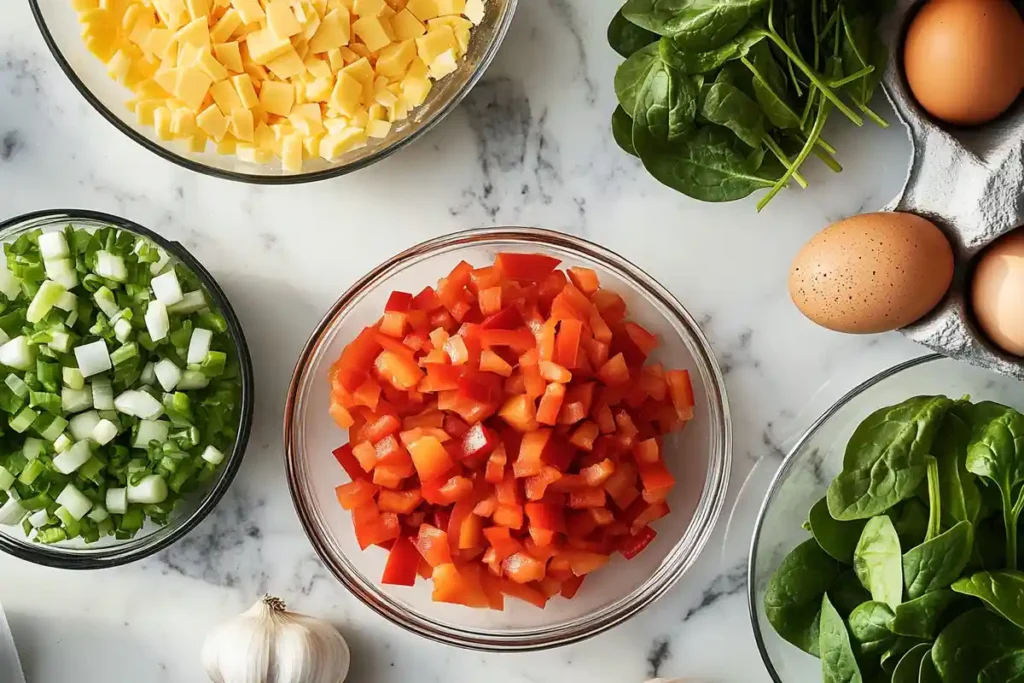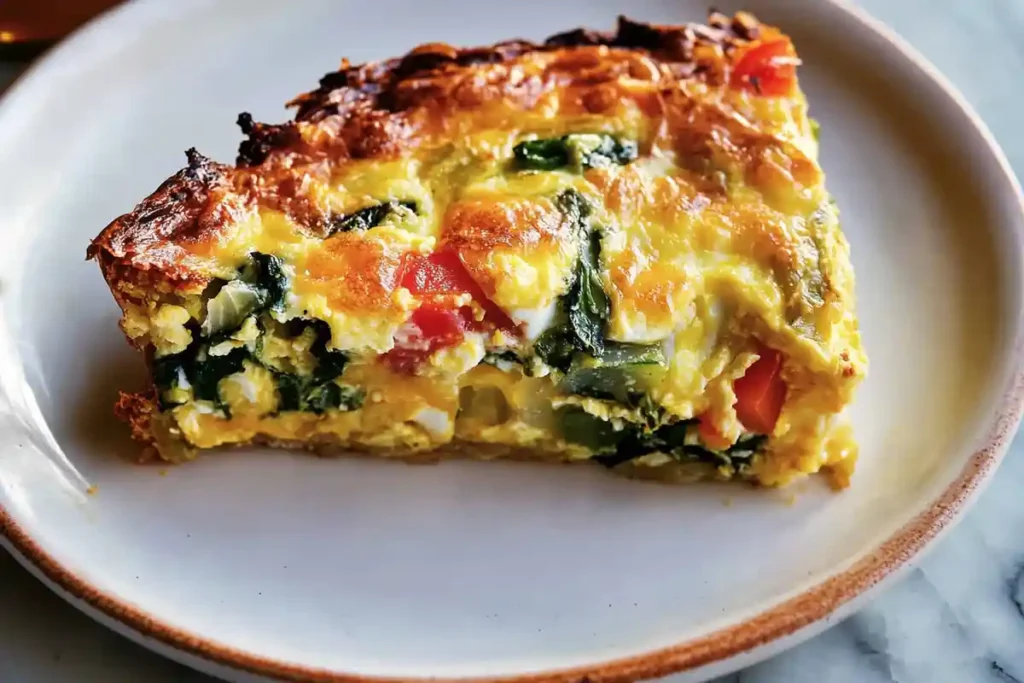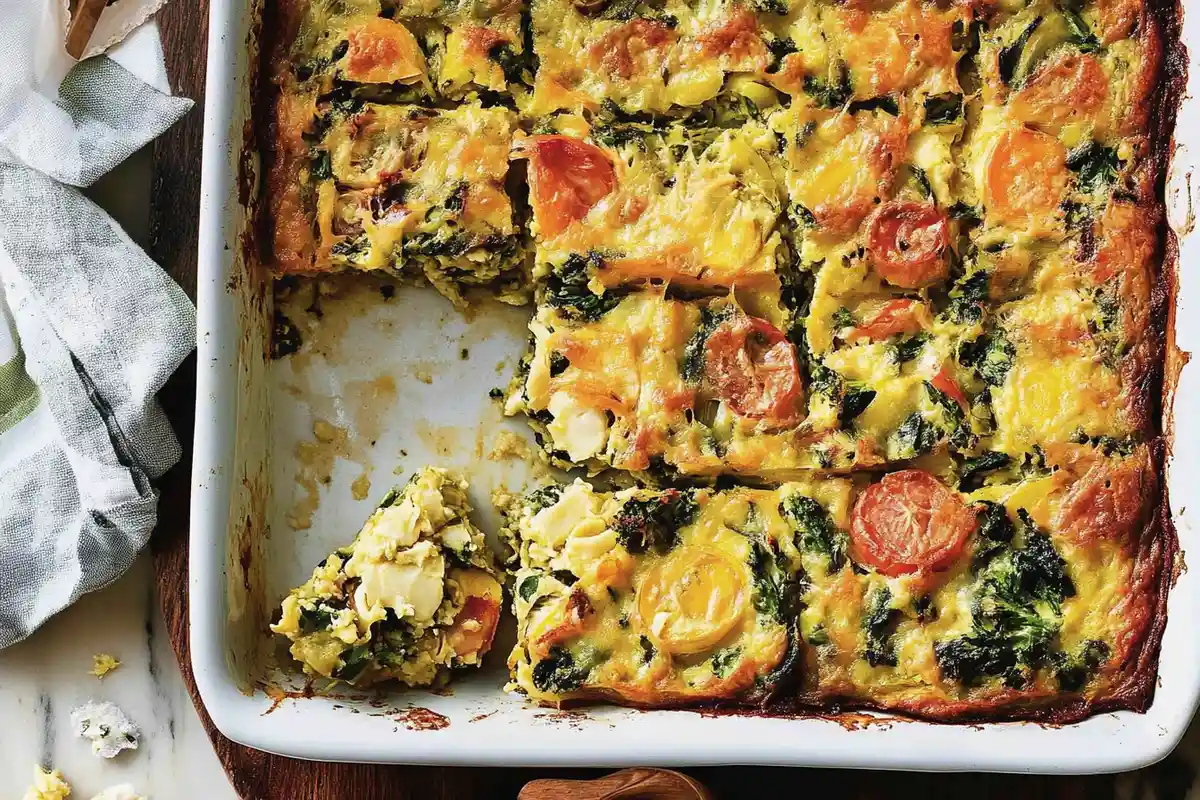Introduction
What’s better than waking up on Easter morning to the smell of something warm, cheesy, and oh-so-comforting wafting from the kitchen? Not much, right? Whether you’re hosting a big family brunch or enjoying a quiet holiday at home, an Easter breakfast casserole is your golden ticket to a stress-free and satisfying start to the day.
This hearty, make-ahead dish is more than just a mix of eggs, bread, and sausage—it’s a tradition in a pan. Packed with layers of flavor, it’s a little bit savory, a little bit creamy, and 100% cozy. Plus, you can prep it the night before and just pop it in the oven while the kids are diving into their Easter baskets. Talk about a win-win!
In this article, we’re diving fork-first into the delicious world of Easter breakfast casseroles. You’ll get the lowdown on why this dish is a holiday hero, a full list of ingredients (with some fun swaps!), and easy step-by-step instructions to make it like a pro. We’ll also sprinkle in expert tips, answer your top questions, and wrap it up with some feel-good final thoughts.
Table of Contents
Want to keep the Easter magic going? I’ve got a few more tasty ideas you’re gonna love! Try the rich and savory Italian Easter Pie or treat everyone to some gooey Sourdough Cinnamon Rolls—they’re a total crowd favorite. If you’re in the mood for something quick and protein-packed, Scrambled Eggs with Cottage Cheese are surprisingly good. Oh, and don’t miss this clever twist: a Breakfast Casserole with Pancake Mix that’s as fun as it sounds!
Why This Recipe Stands Out
Let’s be real—breakfast casseroles aren’t new. But this Easter breakfast casserole? It’s got that little something extra. Maybe it’s the perfect blend of gooey cheese, fluffy eggs, and golden-brown bread cubes. Or maybe it’s the way it brings everyone to the table with smiles, forks in hand, and eyes still a bit sleepy. It’s simple, satisfying, and surprisingly elegant—without the fuss.
What makes this version shine is its flexibility. Want to keep it classic with sausage and cheddar? Great. Feeling fancy with spinach, feta, and sun-dried tomatoes? Go for it. It’s a dish that lets you make it your own, and honestly, that’s half the fun.
I’ll never forget the year my cousin decided to add diced apples and cinnamon to her half of the casserole. I raised an eyebrow… until I tasted it. Game changer. Turns out, sweet and savory can be besties in the same bite.
So, why does this recipe stand out? Because it’s not just food—it’s comfort, creativity, and connection. It’s the kind of dish that invites memories, second helpings, and maybe even a new family tradition
Ingredients You’ll Need
Alright, time to roll up those sleeves! Before you start whisking and layering your way to the perfect Easter breakfast casserole, let’s gather everything you’ll need. To make it easy, we’ve grouped the ingredients into three simple categories:

The Base Essentials
These are the building blocks—can’t skip these!
- 8 large eggs – The fluffy, protein-packed heart of the dish.
- 2 cups whole milk – Makes the eggs creamy and custardy. No milk? Half-and-half or dairy-free alternatives like oat milk work too.
- 1/2 teaspoon salt – To bring out all the flavors.
- 1/4 teaspoon black pepper – Adds just the right kick.
The Body & Texture
This is where the magic of layers happens.
- 6 cups cubed day-old bread – French bread, sourdough, or even brioche works great. Tip: Slightly stale bread soaks up the custard like a dream!
- 1½ cups shredded cheddar cheese – Sharp cheddar is classic, but feel free to mix in mozzarella or pepper jack.
- 1 cup cooked breakfast sausage (crumbled) – Or swap for diced ham, turkey sausage, or even sautéed mushrooms for a veggie twist.
Flavor Boosters (Optional, but Awesome)
Add flair to fit your crowd.
- 1/2 cup chopped bell peppers
- 1/4 cup diced onions
- 1/2 teaspoon garlic powder
- Fresh herbs (parsley, thyme, or chives)
Pro tip: Don’t stress if you’re missing one or two extras—this dish is super forgiving.
Alright, time to roll up those sleeves! Before you start whisking and layering your way to the perfect Easter breakfast casserole, let’s gather everything you’ll need. To make it easy, we’ve grouped the ingredients into three simple categories:
The Base Essentials
These are the building blocks—can’t skip these!
- 8 large eggs – The fluffy, protein-packed heart of the dish.
- 2 cups whole milk – Makes the eggs creamy and custardy. No milk? Half-and-half or dairy-free alternatives like oat milk work too.
- 1/2 teaspoon salt – To bring out all the flavors.
- 1/4 teaspoon black pepper – Adds just the right kick.
The Body & Texture
It is where the magic of layers happens.
- 6 cups cubed day-old bread – French bread, sourdough, or even brioche work great. Tip: Slightly stale bread soaks up the custard like a dream!
- 1½ cups shredded cheddar cheese – Sharp cheddar is classic, but feel free to mix in mozzarella or pepper jack.
- 1 cup cooked breakfast sausage (crumbled) – Or swap for diced ham, turkey sausage, or even sautéed mushrooms for a veggie twist.
Flavor Boosters (Optional, but Awesome)
Add flair to fit your crowd.
- 1/2 cup chopped bell peppers
- 1/4 cup diced onions
- 1/2 teaspoon garlic powder
- Fresh herbs (parsley, thyme, or chives)
Pro tip: Don’t stress if you’re missing one or two extras—this dish is super forgiving.
Step-by-Step Instructions
You’ve got your ingredients, your aprons on, and the oven’s preheating—let’s turn that kitchen into your personal brunch bistro. Making an Easter breakfast casserole is like layering cozy in a pan. Here’s how to make it unforgettable:
Prep the Bread (5 minutes)
Start by cubing your bread into roughly 1-inch pieces. Don’t worry about perfection—rustic is beautiful here. Toss the cubes into a large mixing bowl.
Tip: If your bread is fresh, spread the cubes on a baking sheet and toast them in a 300°F oven for 10 minutes to dry them out slightly. It helps them soak up the egg mixture like sponges.
Cook the Sausage (10–12 minutes)
In a skillet over medium heat, cook the breakfast sausage until browned and crumbly. If you’re using ham or a meatless option, just give it a quick warm-up to bring out the
flavor. Drain off excess grease, but leave a little for that savory depth.
Smells amazing already, doesn’t it?
Mix the Egg Custard (3–5 minutes)

In a large bowl, whisk together the eggs, milk, salt, pepper, and garlic powder (if using). Make sure it’s well combined and frothy—this is the glue that holds everything together.
Layer the Casserole (10 minutes)
Grab a greased 9×13-inch baking dish. Layer it up like this:
- Half of the bread cubes
- Half the sausage
- Half the cheese
- A sprinkle of bell peppers and onions if you’re using them
Repeat the layers. Pour the egg mixture slowly and evenly over the entire pan. Gently press down with a spatula to make sure all the bread is soaked in custard.
Optional: Top with extra cheese or herbs for a fancy touch.
Chill (Overnight or 30 Minutes)
For best results, cover the dish with foil and refrigerate it overnight. It allows the flavors to mingle and the bread to absorb the egg mix fully.
Short on time? Let it sit for at least 30 minutes before baking.
Bake It Up (45–50 minutes)
Preheat your oven to 350°F (175°C). Bake the covered casserole for 30 minutes. Then, remove the foil and bake for another 15–20 minutes, until the top is golden and the center is set.
You’ll know it’s ready when it puffs slightly and a knife inserted in the center comes out clean.
Bonus: Your kitchen will smell like an absolute dream.
Let It Rest (10–15 minutes)
Take the casserole out of the oven and give it a little rest before serving. It helps it firm up, and slice easily and gives your guests a chance to wake up to that amazing aroma.
Serve and Celebrate!

Cut into squares, serve warm, and enjoy! Pair it with fresh fruit, coffee, or even a mimosa if you’re feeling festive.
One bite and you’ll see why this dish is a total crowd-pleaser.
Pro Tips for Success
Want to take your Easter breakfast casserole from great to unforgettable? Here are a few tricks of the trade:
- Use day-old bread – It holds up better and gives that perfect texture. Fresh bread can turn mushy if not toasted first.
- Don’t skip the rest time after baking – Letting it sit for 10–15 minutes helps the layers set, so you’re not scooping out a runny mess.
- Cheese matters – Shred your own if you can. Pre-shredded cheese has anti-caking agents that don’t melt as smoothly.
- Customize with ease – Swap in roasted veggies, smoked salmon, or different cheeses to match your crowd’s taste.
- Watch the bake time – Ovens vary, so check doneness with a knife in the center; it should come out clean and steamy, not wet.
Avoid overloading with too many mix-ins—it can throw off the custard ratio. Balance is key!
Frequently Asked Questions
What do Italians eat for breakfast on Easter?
In Italy, Easter morning isn’t all pancakes and syrup. Many families enjoy Colomba di Pasqua, a dove-shaped sweet bread similar to panettone. Some also munch on hard-boiled eggs, savory pies like torta pasqualina (filled with greens and ricotta), or a slice of leftover lamb from dinner prep. Delizioso!
What do you eat for Easter breakfast?
Traditionally? Think eggs, pastries, fruit, and—yep—a good Easter breakfast casserole! Some families go sweet with hot cross buns or cinnamon rolls, while others go savory with sausage, ham, or even quiche. It’s all about comfort food that fuels the egg hunts and Sunday joy.
What’s the difference between a frittata and a breakfast casserole?
Great question! A frittata is like a crustless quiche cooked on the stovetop and then baked briefly. A breakfast casserole, on the other hand, involves soaking bread in an egg mixture and baking it all together—like a savory bread pudding. Cozy and hearty!
Why is it called John Wayne casserole?
Legend says it’s based on a recipe submitted by the Duke himself to a 1970s cookbook. It’s typically spicy and bold—just like him—with ground beef, cheese, and peppers. Not quite Easter-y, but still a fan favorite!

